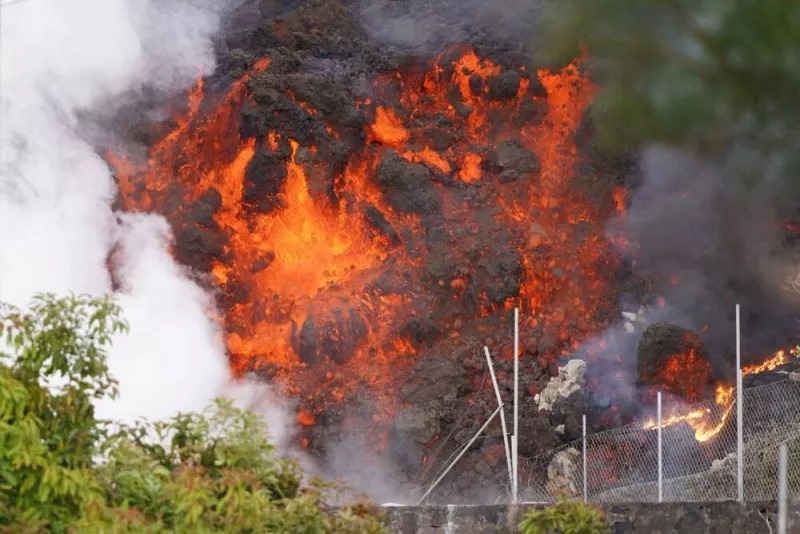Thanks to LANCELOT DIGITAL
Lava already covers 103 hectares and destroys 166 homes
The lava river of the La Palma volcano, which has one more eruptive mouth and is about to reach the sea, has already buried 166 homes and covers 103 hectares of land, while more than 5,500 residents remain evacuated, many of whom they have lost their houses and all their belongings.
The appearance last night of a new volcanic mouth near the town of Tacande, in El Paso, has forced emergency services to expand evacuations and has slowed the advance of lava flows towards the sea, their natural outlet .
The new volcanic mouth has emerged 900 meters from the main one and in the same locality where an earthquake of magnitude 4.1 was registered early yesterday night, the largest of those that have taken place in the area since the beginning of the eruption, at 3:13 pm last Sunday.
In addition, the National Geographic Institute has located three seismic movements in La Palma during the early hours of this Tuesday, one of which was of magnitude 3.2 and one kilometer deep, in the municipality of El Paso.
The appearance of the new eruptive mouth has forced the Cabildo de La Palma to close the LP 211 Todoque highways; LP-212 Tacande; LP-213 Puerto Naos; LP-215 Tazacorte-La Laguna; LP 2 at the height of Tajuya and restrictions on LP-3 La Cumbre.
An image taken by a satellite of the European Union Copernicus has made it possible to calculate the surface covered by the lava, which at 7:50 p.m. on Monday amounted to 103 hectares, while the lava movement and tremor decreased, although the eruptive activity did not. , especially if you take into account that you are at the beginning of the volcanic event.
The Volcanological Institute of the Canary Islands (Involcan) estimates that the volcano emits between 7,997 and 10,665 tons of sulfur dioxide (SO2) per day into the atmosphere, a data that they consider essential to be able to calculate the final date of the eruption.
For its part, a ship from the Spanish Institute of Oceanography (IEO) is already traveling to the island of La Palma to reinforce the research teams working in the area and to study the possible effects of runoff into the sea.
The economic situation left by this volcanic eruption is one of “authentic ruin, no matter where you look,” according to the fishermen and farmers of the island of La Palma.
The effects of the lava have so far affected between 300 and 400 farms, especially bananas, and have led the Canarian Government to announce the award of 1.1 million euros in subsidies to help alleviate the damage.
Meanwhile, reinforcements continue to arrive in La Palma to help with evacuation tasks and in extinguishing the fires caused by the eruption of the volcano, including three new forest seaplanes displaced this Tuesday by the Air Force and members of the forest fire brigade and urban.
In addition, the Military Emergency Unit (UME) could send more troops to the island tomorrow, Wednesday, after 60 members of the Second Battalion based in the Seville base were deployed on La Palma yesterday, raising the aid contingent to 180 personnel and 57 vehicles.
The President of the Government, Pedro Sánchez, remains on La Palma where he plans to attend this noon, together with the Minister of the Interior, Fernando Grande-Marlaska, to a new meeting of the Steering Committee of the Special Plan for Civil Protection and Attention to Emergencies due to Volcanic Risk (PEVOLCA).





